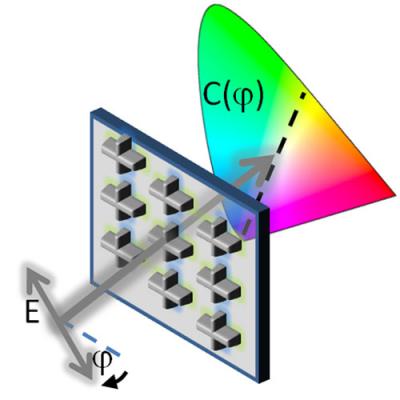A research team comprising Kenneth Crozier and colleagues from the Harvard University has developed a novel tunable color filter, which utilizes optical nanoantennas for accurately controlling color output.
 The color output of a new type of optical filter created at Harvard depends on the polarization of the incoming light. (credit: Image courtesy of Tal Ellenbogen)
The color output of a new type of optical filter created at Harvard depends on the polarization of the incoming light. (credit: Image courtesy of Tal Ellenbogen)
The research team has engineered the size and form of metal nanoparticles in order to make them produce colors based on the polarization of light that illuminates them. These nanoparticles act as nanoantennas operating at visible frequencies.
Traditional RGB filters feature one permanent output color such as blue, green or red, and produce a widespread palette of shades through blending. On the other hand, the nanoantenna-based filter’s each pixel is dynamic and can generate various colors when the polarization of the light is altered.
The research team named the nanoantenna-based filter as ‘chromatic plasmonic polarizer’, as it can produce a pixel with a homogeneous color or intricate patterns with colors changing with the position. The team envisages numerous novel applications for its innovative filters. The filter’s color functionality can be used to deliver various colors in a camera or display and its polarization effects can be used in tissue for biomedical imaging. The technology can be integrated into papers or labels to create security tags for marking money and other objects.
Magnification is required to view the color effects of current fabricated samples. Large-scale nanoprinting technologies may be utilized to produce large samples that are visible to naked eyes. The research team believes that it is feasible to develop a television utilizing the nanoantennas although a large amount of advanced engineering is required.
The study results are reported in Nano Letters.